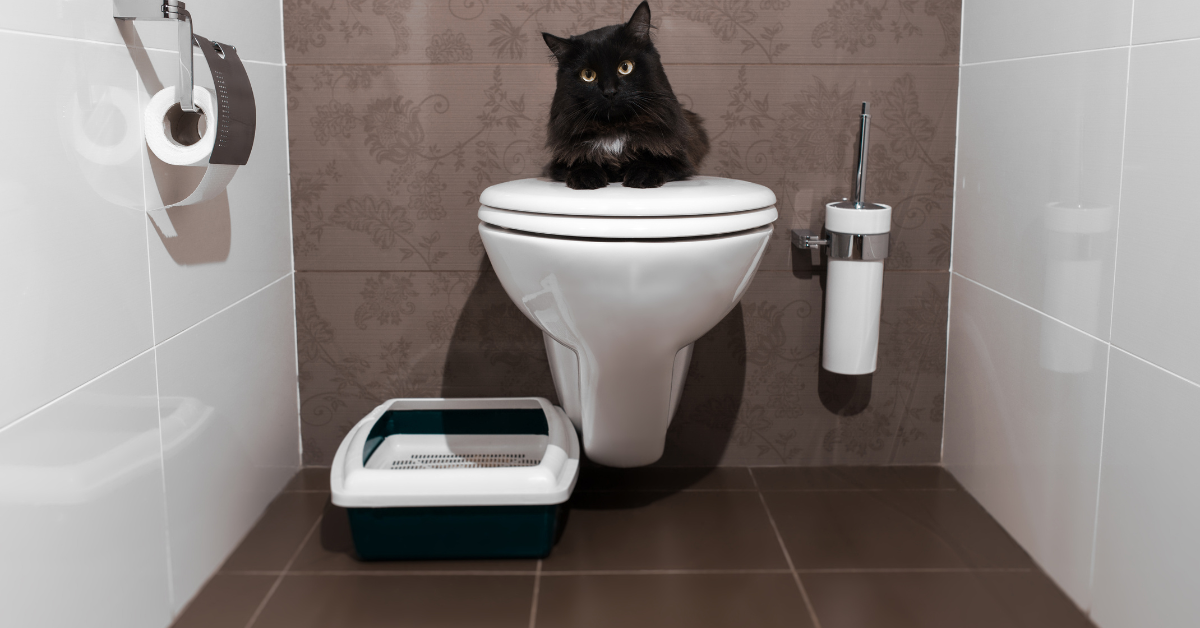The article in the next paragraphs relating to Can You Flush Cat Poo or Litter Down the Toilet? is exceedingly enjoyable. Have a go and make your own personal conclusions.

Intro
As cat owners, it's important to bear in mind how we throw away our feline friends' waste. While it may appear hassle-free to purge cat poop down the bathroom, this method can have harmful consequences for both the setting and human health.
Alternatives to Flushing
The good news is, there are more secure and much more accountable means to throw away cat poop. Take into consideration the following choices:
1. Scoop and Dispose in Trash
The most common approach of dealing with cat poop is to scoop it into a biodegradable bag and toss it in the trash. Make sure to utilize a devoted clutter inside story and deal with the waste promptly.
2. Usage Biodegradable Litter
Choose naturally degradable feline trash made from materials such as corn or wheat. These litters are environmentally friendly and can be safely taken care of in the trash.
3. Bury in the Yard
If you have a yard, consider hiding pet cat waste in a marked location far from vegetable gardens and water resources. Be sure to dig deep sufficient to avoid contamination of groundwater.
4. Set Up a Pet Waste Disposal System
Buy an animal garbage disposal system especially created for cat waste. These systems utilize enzymes to break down the waste, minimizing odor and environmental impact.
Health and wellness Risks
In addition to environmental worries, flushing feline waste can additionally pose health threats to people. Cat feces may have Toxoplasma gondii, a bloodsucker that can cause toxoplasmosis-- a possibly severe disease, especially for expectant females and people with damaged body immune systems.
Ecological Impact
Flushing pet cat poop introduces damaging pathogens and bloodsuckers into the water system, presenting a substantial risk to marine ecological communities. These pollutants can adversely impact marine life and compromise water high quality.
Verdict
Responsible animal possession prolongs past giving food and shelter-- it additionally involves appropriate waste management. By refraining from purging cat poop down the bathroom and opting for alternate disposal techniques, we can lessen our ecological impact and safeguard human wellness.
Why Can’t I Flush Cat Poop?
It Spreads a Parasite
Cats are frequently infected with a parasite called toxoplasma gondii. The parasite causes an infection called toxoplasmosis. It is usually harmless to cats. The parasite only uses cat poop as a host for its eggs. Otherwise, the cat’s immune system usually keeps the infection at low enough levels to maintain its own health. But it does not stop the develop of eggs. These eggs are tiny and surprisingly tough. They may survive for a year before they begin to grow. But that’s the problem.
Our wastewater system is not designed to deal with toxoplasmosis eggs. Instead, most eggs will flush from your toilet into sewers and wastewater management plants. After the sewage is treated for many other harmful things in it, it is typically released into local rivers, lakes, or oceans. Here, the toxoplasmosis eggs can find new hosts, including starfish, crabs, otters, and many other wildlife. For many, this is a significant risk to their health. Toxoplasmosis can also end up infecting water sources that are important for agriculture, which means our deer, pigs, and sheep can get infected too.
Is There Risk to Humans?
There can be a risk to human life from flushing cat poop down the toilet. If you do so, the parasites from your cat’s poop can end up in shellfish, game animals, or livestock. If this meat is then served raw or undercooked, the people who eat it can get sick.
In fact, according to the CDC, 40 million people in the United States are infected with toxoplasma gondii. They get it from exposure to infected seafood, or from some kind of cat poop contamination, like drinking from a stream that is contaminated or touching anything that has come into contact with cat poop. That includes just cleaning a cat litter box.
Most people who get infected with these parasites will not develop any symptoms. However, for pregnant women or for those with compromised immune systems, the parasite can cause severe health problems.
How to Handle Cat Poop
The best way to handle cat poop is actually to clean the box more often. The eggs that the parasite sheds will not become active until one to five days after the cat poops. That means that if you clean daily, you’re much less likely to come into direct contact with infectious eggs.
That said, always dispose of cat poop in the garbage and not down the toilet. Wash your hands before and after you clean the litter box, and bring the bag of poop right outside to your garbage bins.
https://trenchlesssolutionsusa.com/why-cant-i-flush-cat-poop/

I stumbled upon that article about How to Dispose of Cat Poop and Litter Without Plastic Bags while surfing the internet. Do you know somebody who is intrigued by Don’t flush cat feces down the toilet? Take a moment to share it. I am grateful for your time. Please check up our website back soon.
Call Today
Comments on “Avoid Flush Cat Poop Down Your Toilet - Safeguard Your Pipes System”